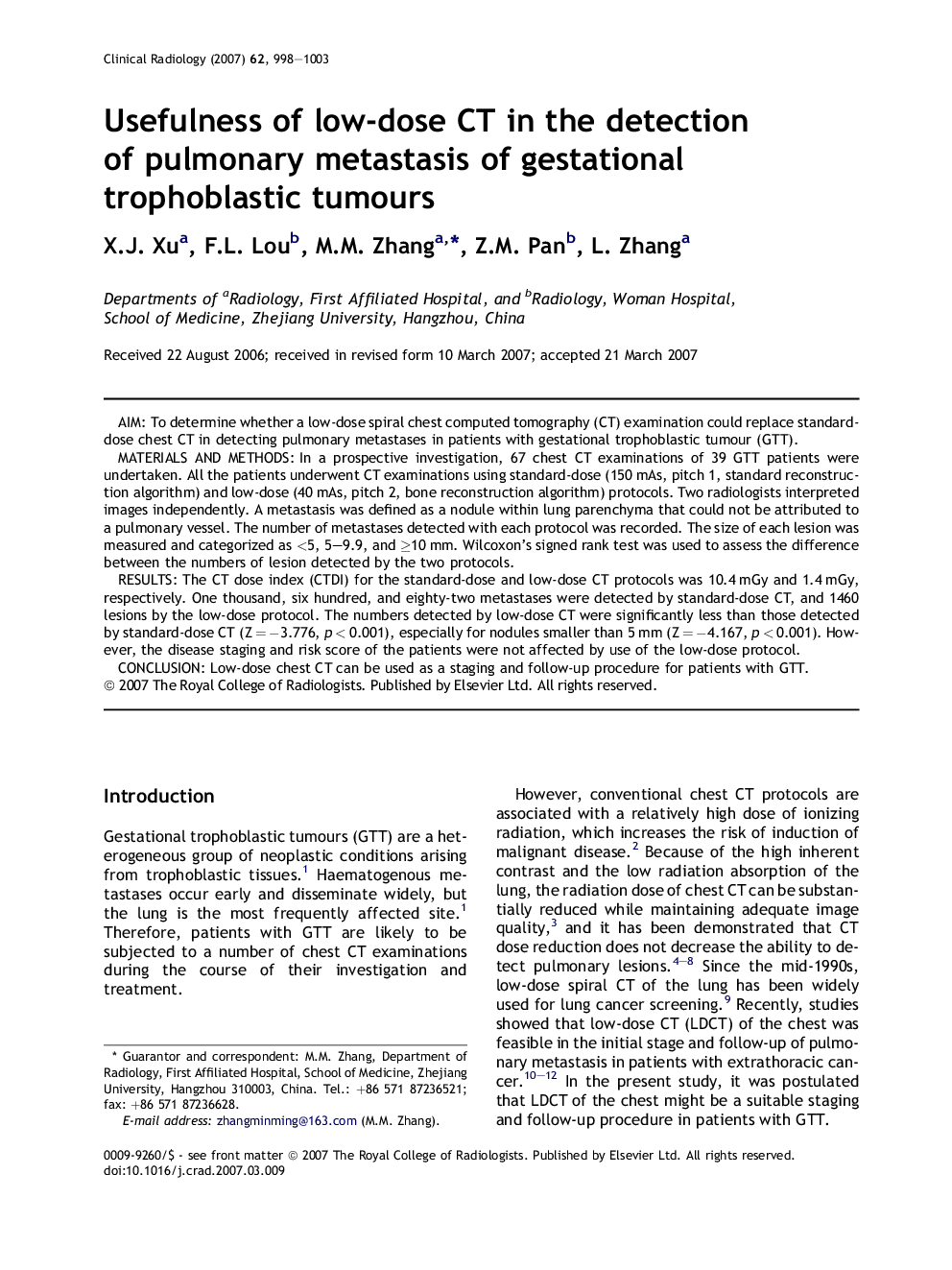| Article ID | Journal | Published Year | Pages | File Type |
|---|---|---|---|---|
| 3983635 | Clinical Radiology | 2007 | 6 Pages |
AimTo determine whether a low-dose spiral chest computed tomography (CT) examination could replace standard-dose chest CT in detecting pulmonary metastases in patients with gestational trophoblastic tumour (GTT).Materials and methodsIn a prospective investigation, 67 chest CT examinations of 39 GTT patients were undertaken. All the patients underwent CT examinations using standard-dose (150 mAs, pitch 1, standard reconstruction algorithm) and low-dose (40 mAs, pitch 2, bone reconstruction algorithm) protocols. Two radiologists interpreted images independently. A metastasis was defined as a nodule within lung parenchyma that could not be attributed to a pulmonary vessel. The number of metastases detected with each protocol was recorded. The size of each lesion was measured and categorized as <5, 5–9.9, and ≥10 mm. Wilcoxon's signed rank test was used to assess the difference between the numbers of lesion detected by the two protocols.ResultsThe CT dose index (CTDI) for the standard-dose and low-dose CT protocols was 10.4 mGy and 1.4 mGy, respectively. One thousand, six hundred, and eighty-two metastases were detected by standard-dose CT, and 1460 lesions by the low-dose protocol. The numbers detected by low-dose CT were significantly less than those detected by standard-dose CT (Z = −3.776, p < 0.001), especially for nodules smaller than 5 mm (Z = −4.167, p < 0.001). However, the disease staging and risk score of the patients were not affected by use of the low-dose protocol.ConclusionLow-dose chest CT can be used as a staging and follow-up procedure for patients with GTT.
